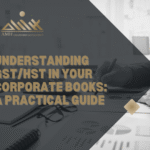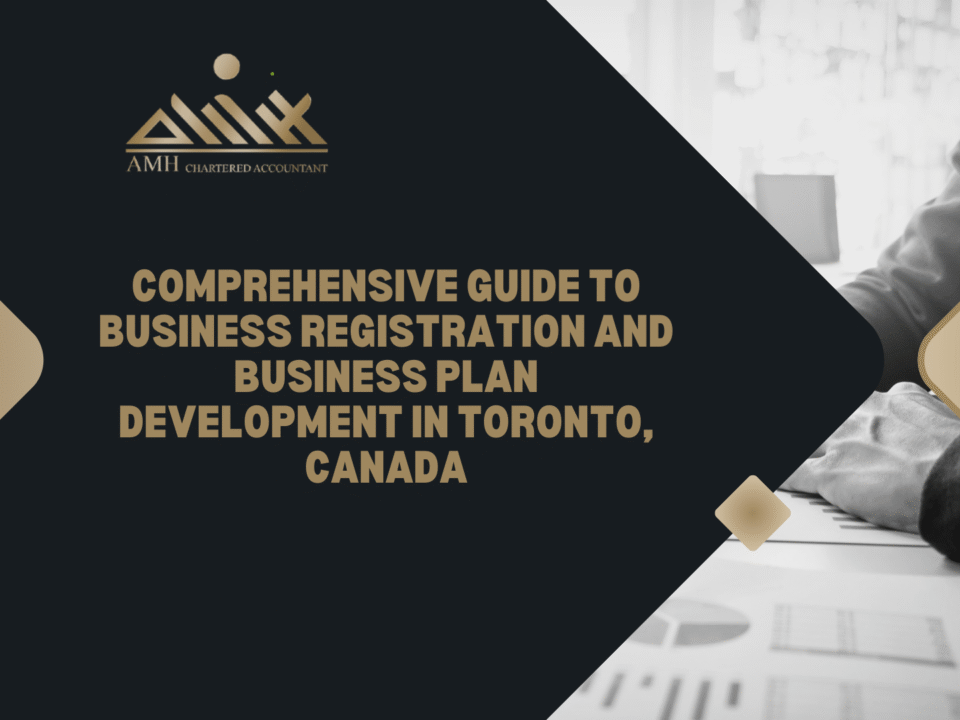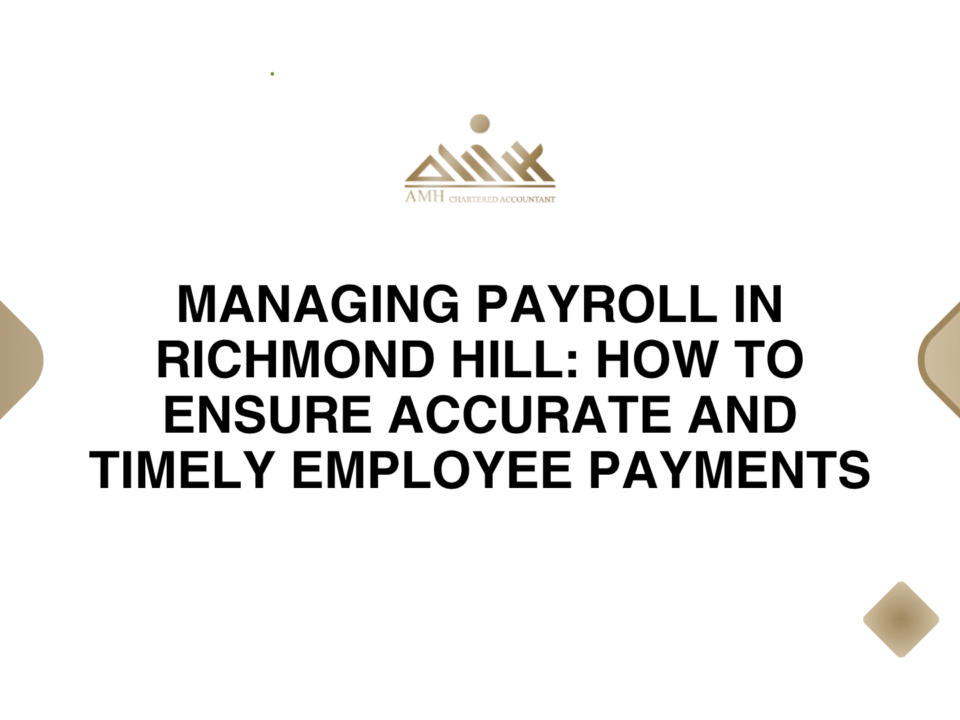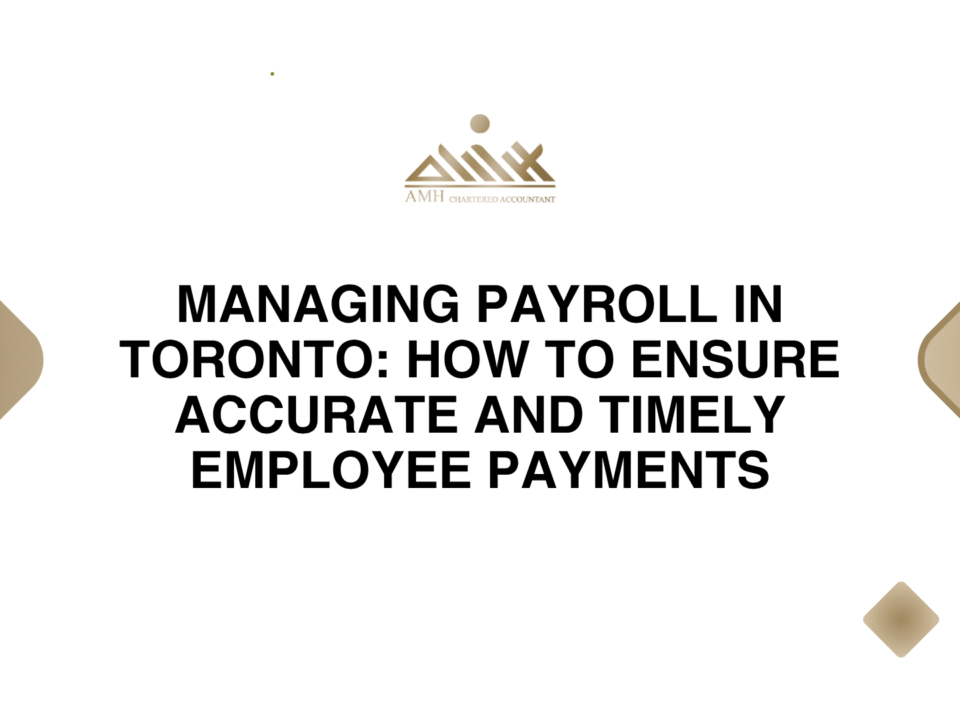
Understanding GST/HST in Your Corporate Books: A Practical Guide
July 1, 2025
5 Common Bank Reconciliation Mistakes and How to Avoid Them
July 5, 2025Payroll Management Made Simple: Compliance and Clarity for Employers
Payroll management can be complex and time-consuming, but it’s crucial to ensure that your employees are paid accurately and on time while complying with all relevant regulations. At AMH Chartered Professional Accountant, we simplify payroll management for businesses in Toronto, Milton, Oakville, Hamilton, Kitchener, and the GTA, helping employers navigate the complexities of payroll compliance with ease and clarity.
Introduction: The Challenges of Payroll Management
Payroll management is one of the most essential yet challenging tasks for any business. Employers must ensure that they calculate employee wages, withhold the correct taxes, deduct benefits, and meet various local and national compliance requirements—all while maintaining employee satisfaction and trust. The complexity increases as businesses grow, adding more employees, benefits, and tax responsibilities to manage.
Mistakes in payroll management can result in legal penalties, dissatisfied employees, and administrative inefficiencies. For small businesses or those with limited HR resources, navigating payroll compliance can feel overwhelming. This is where AMH Chartered Professional Accountant comes in—offering comprehensive payroll solutions to ensure that your payroll processes are accurate, timely, and compliant with all relevant laws and regulations.
The Importance of Payroll Compliance
Payroll compliance is crucial for several reasons:
Avoiding Penalties: Failure to comply with tax laws, labor regulations, and payroll deadlines can result in hefty fines and penalties from tax authorities such as the Canada Revenue Agency (CRA).
Building Trust: Timely and accurate payroll payments help build trust with employees, contributing to overall job satisfaction and retention.
Operational Efficiency: Streamlined payroll processes reduce administrative costs and avoid errors that can disrupt business operations.
Legal Obligations: Employers have legal obligations to withhold taxes, remit employee contributions, and provide benefits as outlined by government regulations.
By understanding payroll requirements and implementing best practices, employers can ensure smooth and compliant payroll management.
Key Payroll Laws and Regulations Employers Must Follow
Employers must adhere to a variety of federal, provincial, and municipal payroll laws and regulations. Understanding these laws is essential to maintaining compliance and avoiding costly mistakes. Below are some key regulations to keep in mind:
1. Employment Standards Act (ESA)
In Ontario, the ESA sets out the minimum standards for wages, overtime, vacation pay, and working hours. Employers must ensure they meet these standards, including paying employees for overtime and ensuring appropriate holiday pay.
2. Canada Revenue Agency (CRA) Regulations
The CRA mandates the withholding of taxes from employee wages, including federal and provincial income taxes, Canada Pension Plan (CPP) contributions, and Employment Insurance (EI) premiums. Employers are responsible for remitting these amounts to the CRA in a timely manner.
3. Tax Withholding and Remittance
Employers must withhold appropriate amounts of income tax, CPP, and EI premiums from employees’ pay and remit them to the CRA. These amounts are based on the employee’s income and deductions.
4. Benefit and Pension Plans
Employers may offer benefits like health insurance, pensions, or RRSP matching. These benefits must be properly documented and administered in compliance with Canadian labor laws.
5. Employee vs. Independent Contractor Classification
Misclassifying employees as independent contractors can lead to fines and back taxes. Understanding the difference and adhering to CRA guidelines is critical.
By following these regulations and ensuring compliance with payroll laws, employers can avoid legal issues and foster a transparent, positive relationship with employees.
How to Simplify Payroll Management for Employers
Simplifying payroll management is key to reducing stress and ensuring accuracy. The following steps outline how businesses can streamline their payroll process:
Step 1: Choosing the Right Payroll System
Selecting the right payroll system is the first step in simplifying payroll management. Businesses can choose between:
Manual Payroll Systems: Suitable for very small businesses with simple payroll needs.
Payroll Software: Most businesses benefit from payroll software, which automates the process, reduces errors, and ensures compliance. Examples include QuickBooks Payroll, ADP, and Ceridian.
Outsourcing to Experts: Outsourcing payroll management to accounting firms like AMH Chartered Professional Accountant ensures that all payroll functions are handled by experts, freeing up valuable time for business owners.
By choosing the right system, businesses can reduce the risk of errors, automate calculations, and streamline the payroll process.
Step 2: Correctly Classifying Employees and Contractors
Properly classifying workers as employees or independent contractors is crucial for payroll compliance. Misclassification can lead to penalties, including back taxes and benefits owed. The CRA has clear guidelines to determine whether a worker is an independent contractor or an employee based on:
Control: Who determines how the work is done?
Ownership of Tools: Does the worker supply their own tools?
Risk: Is the worker exposed to business risks, or are they guaranteed a salary?
By understanding and following these classification rules, employers can avoid costly mistakes.
Step 3: Calculating Payroll Taxes Accurately
Payroll taxes are a significant part of payroll management. Employers must calculate:
Income Tax Withholding: Based on the employee’s income, tax credits, and deductions.
CPP Contributions: Both the employee and employer contribute to the Canada Pension Plan.
EI Premiums: Both the employee and employer contribute to Employment Insurance.
Payroll software or outsourced services like those offered by AMH Chartered Professional Accountant can automatically calculate these deductions, reducing the risk of human error.
Step 4: Managing Deductions and Benefits
Many businesses offer benefits such as health insurance, dental plans, and retirement contributions. Deductions for these benefits must be accurately recorded and processed as part of payroll.
Taxable Benefits: Some benefits may be taxable (e.g., company cars), while others are non-taxable (e.g., employer contributions to a pension plan).
Employee Contributions: In some cases, employees may share the cost of benefits, which should be deducted from their paychecks.
Ensuring these deductions are handled accurately is essential to avoid discrepancies and tax issues.
Step 5: Timely Payroll Processing and Payment
Ensuring that employees are paid on time is one of the most important aspects of payroll management. Late or inaccurate payments can lead to employee dissatisfaction and potential legal issues.
Payroll Schedules: Establish a clear payroll schedule (e.g., weekly, bi-weekly, or monthly) and adhere to it.
Direct Deposit: Offering direct deposit helps streamline payroll and ensures timely payments to employees.
Timely payroll processing enhances employee satisfaction and minimizes the risk of payroll-related errors.
Payroll Software and Tools for Automation
Automation is a key factor in simplifying payroll management. Payroll software eliminates many of the manual tasks involved in payroll processing, including tax calculations, deductions, and filing requirements. Tools like QuickBooks, ADP, and Xero integrate with accounting systems to ensure accurate payroll management.
Benefits of Payroll Software:
Automated Tax Calculations: Payroll software automatically calculates federal, provincial, and local taxes, reducing the risk of errors.
Time Tracking: Many payroll systems offer integrated time-tracking features to help with accurate wage calculations.
Tax Filing: Payroll systems can automatically generate tax forms (e.g., T4s) and submit them to the CRA.
Compliance Updates: These systems are regularly updated to ensure that businesses remain compliant with ever-changing tax laws.
Using payroll software reduces administrative workload and improves accuracy, allowing businesses to focus on growth and other essential tasks.
Benefits of Outsourcing Payroll to Experts
Outsourcing payroll to professionals like AMH Chartered Professional Accountant can save your business time, reduce errors, and ensure compliance. Here are the main benefits of outsourcing payroll:
Expertise: Payroll experts ensure accurate tax calculations, deductions, and compliance with Canadian labor laws.
Time Savings: Outsourcing allows you to focus on running your business, leaving payroll processing to the professionals.
Error Reduction: With experts handling your payroll, you significantly reduce the risk of errors that could lead to penalties or employee dissatisfaction.
Scalability: As your business grows, outsourcing payroll can easily scale with you, handling complex requirements without additional overhead.
How AMH Chartered Professional Accountant Simplifies Payroll for Employers
At AMH Chartered Professional Accountant, we specialize in providing comprehensive payroll services for businesses of all sizes. Our payroll services include:
Full-Service Payroll Processing: We manage everything from calculating wages and taxes to processing payments and filing necessary paperwork.
Compliance Assurance: We ensure your business stays compliant with all federal and provincial tax laws, employment standards, and reporting requirements.
Customized Solutions: We tailor our payroll services to meet your business’s unique needs, whether you have a small team or hundreds of employees.
Real-Time Support: Our team is always available to answer questions and resolve any payroll issues promptly.
We make payroll management simple and hassle-free, so you can focus on growing your business.
Common Payroll Mistakes and How to Avoid Them
Incorrect Tax Calculations: Ensure that all tax rates are up to date, and use payroll software to automate calculations.
Misclassification of Employees: Always classify employees and contractors correctly based on the CRA guidelines.
Missing Deadlines: Ensure timely payroll processing to avoid late fees and employee dissatisfaction.
Overlooking Benefits Deductions: Keep track of employee benefits and deductions to avoid errors in the payroll process.
Best Practices for Ongoing Payroll Management
Stay Updated on Regulations: Regularly review payroll laws and changes to tax rates.
Conduct Regular Audits: Perform periodic audits to ensure payroll accuracy and compliance.
Use Direct Deposit: Streamline payroll processing by offering direct deposit options to employees.
The Future of Payroll Management: Trends and Innovations
The future of payroll is driven by technology. Innovations such as AI-powered payroll systems, cloud-based payroll software, and integrated HR platforms are making payroll management faster, more accurate, and more efficient.
Conclusion: Simplifying Payroll for a Stress-Free Business
Efficient payroll management is crucial for the smooth operation of your business. By following best practices, using the right payroll tools, and seeking professional help when necessary, you can simplify payroll while staying compliant with regulations.
At AMH Chartered Professional Accountant, we offer reliable and cost-effective payroll solutions, ensuring your employees are paid accurately and on time while complying with all relevant laws.
FAQs
What is payroll compliance?
Payroll compliance involves adhering to federal, provincial, and local tax laws, ensuring accurate tax withholdings, timely payments, and proper reporting.
Can I outsource my payroll management?
Yes, outsourcing payroll is a great option for businesses looking to save time, reduce errors, and ensure compliance with tax laws.
How can AMH help me with payroll management?
AMH offers full-service payroll processing, including tax calculation, compliance assurance, and customized solutions to meet your business’s needs.
What is the best payroll software for my business?
The best payroll software depends on your business size and needs. AMH can help you choose and implement the right software for your payroll management.
How often should payroll be processed?
Payroll should be processed according to your business’s payroll schedule, whether weekly, bi-weekly, or monthly.




